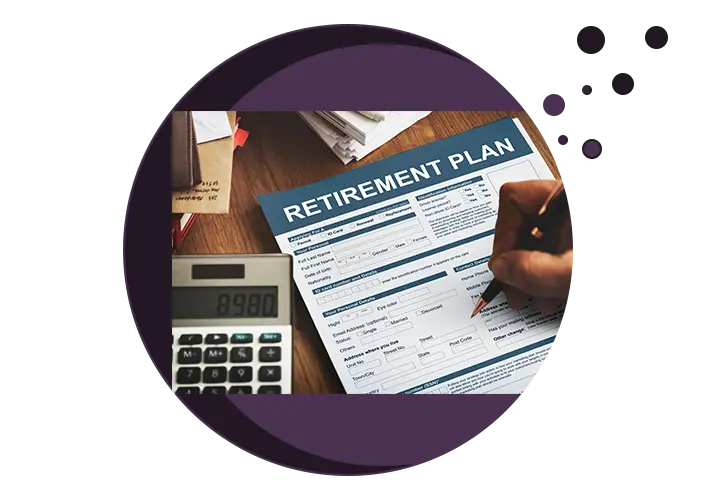Stocks
Stocks, also known as shares or equities, might be the most well-known and simple type of investment. When you buy stock, you’re buying an ownership stake in a publicly-traded company. Many of the biggest companies in the country are publicly traded, meaning you can buy stock in them. Some examples include Exxon, Apple and Microsoft.
How you can make money: When you buy a stock, you’re hoping that the price will go up so you can then sell it for a profit. The risk, of course, is that the price of the stock could go down, in which case you’d lose money.


Bonds
When you buy a bond, you’re essentially lending money to an entity. Generally, this is a business or a government entity. Companies issue corporate bonds, whereas local governments issue municipal bonds. The U.S. Treasury issues Treasury bonds, notes and bills, all of which are debt instruments that investors buy.
How you can make money: While the money is being lent, the lender or investor gets interest payments. After the bond matures, meaning you’ve held it for the contractually determined amount of time, you get your principal back.
The rate of return for bonds is typically much lower than it is for stocks, but bonds also tend to be a lower risk. There is still some risk involved, of course. The company you buy a bond from could fold or the government could default. Treasury bonds, notes and bills, however, are considered very safe investments.
Mutual Funds
A mutual fund is a pool of many investors’ money that is invested broadly in a number of companies. Mutual funds can be actively managed or passively managed. An actively managed fund has a fund manager who picks securities in which to put investors’ money. Fund managers often try to beat a designated market index by choosing investments that will outperform such an index. A passively managed fund, also known as an index fund, simply tracks a major stock market index like the Dow Jones Industrial Average or the S&P 500. Mutual funds can invest in a broad array of securities: equities, bonds, commodities, currencies and derivatives.
Mutual funds carry many of the same risks as stocks and bonds, depending on what they are invested in. The risk is often lesser, though, because the investments are inherently diversified.
How you can make money: Investors make money off mutual funds when the value of stocks, bonds and other bundled securities that the fund invests in go up. You can buy them directly through the managing firm and discount brokerages. But note there is typically a minimum investment and you’ll pay an annual fee.


Exchange-Traded Funds (ETFs)
Exchange-traded funds (ETFs) are similar to mutual funds in that they are a collection of investments that tracks a market index. Unlike mutual funds, which are purchased through a fund company, shares of ETFs are bought and sold on the stock markets. Their price fluctuates throughout the trading day, whereas mutual funds’ value is simply the net asset value of your investments, which is calculated at the end of each trading session.
How you can make money: ETFs make money from the collection of a return amongst all of their investments. ETFs are often recommended to new investors because they’re more diversified than individual stocks. You can further minimize risk by choosing an ETF that tracks a broad index. And just like mutual funds, you can make money from an ETF by selling it as it gains value.
Certificates of Deposit (CDs)
A certificate of deposit (CD) is considered to be a very low-risk investment. You give a bank a certain amount of money for a predetermined amount of time and earn interest on that money. When that time period is over, you get your principal back, plus the predetermined amount of interest. The longer the loan period, the higher your interest rate is likely to be. While the risk is low, so is the potential return.
How you can make money: With a CD, you make money from the interest that you earn during the term of the deposit. CDs are good long-term investments for saving money. There are no major risks because they are FDIC-insured up to $250,000, which would cover your money even if your bank were to collapse. That said, you have to make sure you won’t need the money during the term of the CD, as there are major penalties for early withdrawals.


Retirement Plans
Types of Investments
A retirement plan is an investment account, with certain tax benefits, where investors invest their money for retirement. There are a number of types of retirement plans such as workplace retirement plans, sponsored by your employer, including 401(k) plans and 403(b) plans. If you don’t have access to an employer-sponsored retirement plan, you could get an individual retirement plan (IRA) or a Roth IRA.
How you can make money: Retirement plans aren’t a separate category of investment, per se, but a vehicle to buy stocks, bonds and funds in two tax-advantaged ways. The first, lets you invest pretax dollars (as with a traditional IRA). The second, allows you to withdraw money without paying taxes on that money. The risks for the investments are the same as if you were buying the investments outside of a retirement plan.
Options
An option is a somewhat more advanced or complex way to buy a stock. When you buy an option, you’re purchasing the ability to buy or sell an asset at a certain price at a given time. There are two types of options: call options, for buying assets and put options, for selling options.
How you can make money: As an investor, you lock in the price of a stock with the hope that it will go up in value. However, the risk of an option is that the stock could also lose money. So if the stock decreases from its initial price, you lose the money of the contract. Options are an advanced investing technique and retail should exercise caution before using them.


Annuities
When you buy an annuity, you purchase an insurance policy and, in return, you get periodic payments. These payments generally come down the road in retirement but are often purchased years in advance. This is why many people use annuities as part of their retirement savings plan.
Annuities come in numerous varieties. They may last until death or only for a predetermined period of time. They may require periodic premium payments or just one up-front payment. They may link partially to the stock market or they may simply be an insurance policy with no direct link to the markets. Payments may be immediate or deferred to a specified date. They may be fixed or variable.
How you can make money: Annuities can guarantee an additional stream of income for retirement. But while they are fairly low risk, they aren’t high-growth. So investors tend to make them a good supplement for their retirement savings, rather than an integral source of funding.
Derivatives
A derivative is a financial instrument that drives its value from another asset. Similar to an annuity, it is a contract between two parties. In this case, though, the contract is an agreement to sell an asset at a specific price in the future. If the investor agrees to purchase the derivative then they are betting that the value won’t decrease. Derivatives are considered to be a more advanced investment and are typically purchased by institutional investors.
The three most common types of derivatives are:
Options Contracts: The options contract gives the investor the opportunity to buy or sell an asset at a specific price at a specific time in the future. Call options provide you the opportunity to buy the asset at that price and put options allow you to sell that asset.
Futures Contracts: Futures are contracts that commit to a sale to being made at a specified time and on a specified date.
Swaps: This is an agreement between two parties to exchange cash flows in the future.
How you can make money: You can make money investing in derivatives if you are on the right side of price fluctuations. For example, if you agree to buy copper at $1,000 in nine months but the market price at that time is $2,000 then you’ve essentially doubled your investment.


Commodities
Commodities are physical products that you can invest in. They are common in futures markets where producers and commercial buyers – in other words, professionals – seek to hedge their financial stake in the commodities.
Retail investors should make sure they thoroughly understand futures before investing in them. Partly, that’s because commodities investing runs the risk that the price of a commodity will move sharply and abruptly in either direction due to sudden events. For instance, political actions can greatly change the value of something like oil, while the weather can impact the value of agricultural products.
Here’s a breakdown of the four main types of commodities:
Metals: precious metals (gold and silver) and industrial metals (copper)
Agricultural: Wheat, corn and soybeans
Livestock: Pork bellies and feeder cattle
Energy: Crude oil, petroleum products and natural gas
One of the primary ways that investors make money with commodities is by trading commodity futures. Investors sometimes buy commodities as a hedge for their portfolios during inflation. You can buy commodities indirectly through stocks and mutual funds or ETFs and futures contracts.
Hybrid Investments
Hybrid investments incorporate elements of equities and fixed-income securities. One such example is preferred shares, which is an equity security with a bond-like feature. Preferred stock generally comes with a fixed dividend rate. Dividends to preferred shareholders are paid before dividends to common shareholders. Another difference is that if the company that issued the shares is liquidated, preferred stockholders will have access to the company’s assets before common stockholders. Owners of preferred stock are behind bondholders in line for company assets, but they’re ahead of owners of common stock.
Another type of hybrid is a convertible bond. It is a corporate bond that can be “converted” into shares of the company. A bond is a loan to a company, whereas a share is a “share” of ownership in the company. When you convert from a bond to a share, you go from being a lender to the company to a part-owner of the company.


